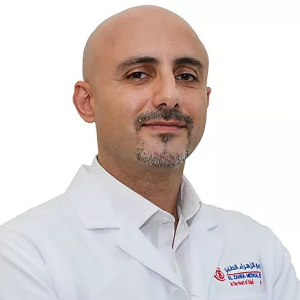Brain AVM Embolization with Onyx
The treatment of brain arteriovenous malformations (AVMs) is challenging based on a multidisciplinary approach involving neurosurgery, radiosurgery, and interventional neuroradiology. The embolization … Read More
Top Doctors For Brain AVM Embolization with Onyx Treatments
Top Hospitals For Brain AVM Embolization with Onyx Treatments
Brain AVM Embolization with Onyx
- Hereditary hemorrhagic telangiectasia
- Ehlers-danlos syndrome
- Bonnet-because-Blanc syndrome
- PHACE syndrome
- Acute Brain AVM embolization with onyx from vertebrobasilar circulation or via perforating feeders.
- Acute hemorrhages via few or insufficient veins.
- The assessment of ischemic lesions.
- Approximate imaging of lesion morphology.
- Mapping eloquent cortex areas.
- Arterial supply.
- The flow rate in individual components.
- Venous drainages.
- Call on your doctor on the day before the exam, to confirm the time and location of the examination.
- Do not smoke or drink caffeine 24 hours to the test. Smoking and caffeine may introduce complications. They are blood thinners and as such, they hinder the clotting of your blood.
- Come expecting that you will be asked to change into a hospital gown. Come in comfortable clothing. You may likely leave your jewelry at home.
- Obtain advanced instructions from your doctor, to know what you are expected to do before coming for the test.
- Before The Procedure
-
- You may be asked to:
- Change into a hospital gown.
- Remove your jewelry.
- Be positioned on the examination table.
- An intravenous [IV] line will be inserted into one of your veins, for administration.
- You will be connected to monitors that track your heart rate, blood pressure, oxygen level, and pulse.
- Your body area for the catheter insertion will be sterilized and covered with a surgical drape [DMSO].
- You may be asked to:
- During The Procedures
- Numb the area for the catheter insertion with local or general anesthesia.
- Make a small incision on the numbed area of your body.
- Flush the guiding microcatheter via a pressure bag, with saline containing 2500 U heparin/L.
- Guide the microcatheter to the nidus of the AVM, with the aid of a 0.008-inch guidewire [Mirage, ev3], until the tip of the microcatheter gets to the desired position.
- Flush the microcatheter with 5ml of normal saline.
- Inject 0.25ml of DMSO into the microcatheter, to fill the dead space.
- Aspirate onyx into 1ml syringe.
- Inject 0.25ml of onyx for 40 seconds [slowly], to fill the microcatheter and fill up the dead space.
- Continue the slow injection of onyx under fluoroscopy.
- Carry out single injections of onyx for up to 90 minutes.
- Withdraw the catheter when reflux exceeds about 1.5 to 2cm of the catheter’s tip.
- After the Procedures
-
- You will remain in the procedure room for some hours, for close monitoring.
- The health workers will use an ultrasound or external labor monitor, to track your heartbeats after the procedure.
- You will be:
- Transferred into a hospital room until your doctor makes certain your discharge to go home.
- Advised to avoid smoking and caffeine.
- Call on your doctor if any emergency health condition springs up.
- Value your follow-up appointments with your doctor.
- Take your medications as recommended.
Symptoms
Inconsistent data are available regarding the incidence of AVM symptoms. In most cases, the disorder may show no symptom [asymptomatic]. However, the most common symptoms include:
- Bleeding.
- Seizures.
- Recurring headaches.
• Severe headache.
• Weakness, numbness or paralysis.
• Vision loss.
• Difficulty speaking.
• Confusion or inability to understand others.
• Severe unsteadiness.
Causes
The factors that promote arteriovenous malformation [AVM] raptures include:
- Presence of aneurysms.
- Size of the blood vessels [if the diameter is <3cm].
- Deep or periventricular location.
- High pressure in supplying arteries.
- Pregnancy.
The cause of cerebral AVM is unknown. An AVM occurs when arteries in the brain connect directly to nearby veins without having the normal small vessels (capillaries) between them. AVMs vary in size and location in the brain. An AVM rupture occurs because of pressure and damage to the blood vessel.
FAQ
What is the recovery period of brain AVM embolization surgery?
Full recovery takes few months, but normal day to day activities can be resumed after 4 to 6 weeks. If side effects are seen, rehabilitation programmes may also be advised during this period.
In observational studies, the mortality rate after intracranial hemorrhage from AVM rupture ranges from 12% – 66.7% and 23% – 40% of survivors have a significant disability.
- Is AVM brain completely curable?
Once an AVM is completely taken out surgically, the patient is cured. An AVM doesn't grow back.
- Can you live with an AVM?
AVM affects around 1 in 2000 people. Although most people with the condition can lead relatively normal lives, they live with the risk that the tangles can burst and bleed into the brain at any time, causing a stroke. Around one in every hundred AVM patients suffer a stroke each year.
- Can I drink alcohol with an AVM?
Do not drink alcohol. Alcohol may also raise your blood pressure or thin your blood. Blood-thinning can cause hemorrhage.
- Is embolization a surgical procedure?
Endovascular embolization (EE) is an invasive surgical procedure. It's used to treat abnormal blood vessels found in your brain, as well as other cases of your body.















































































